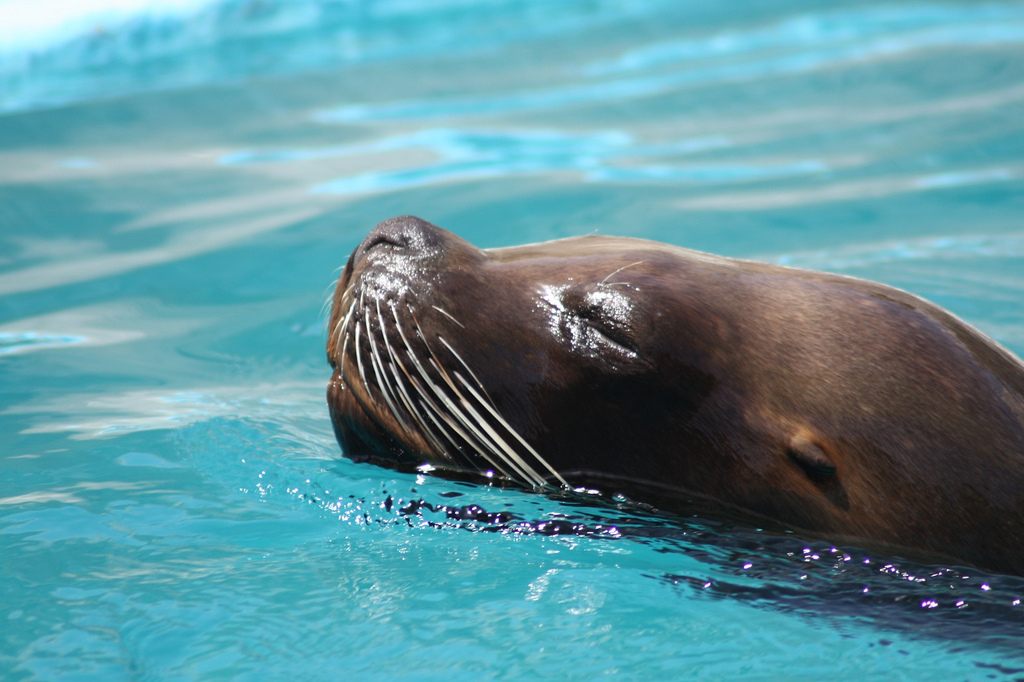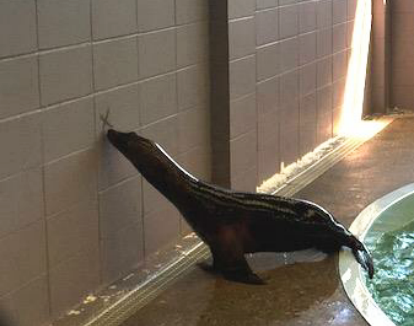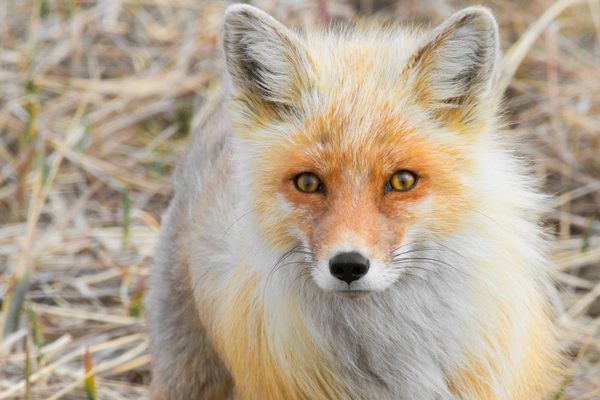Sea Lions Are Surprisingly Receptive to Holiday Spices
A new study shows they love to sniff not only kelp and sardines, but orange, cinnamon and banana.

If a sea lion is in a recovery center, how can you make him happy? You can give him some toys to play with, and plenty of water to flop around in. You can house him with a friend, or toss him a fish or two.
But it turns out there are other options. In a recent study published in the Journal of Applied Animal Welfare Science, Dr. Mystera Samuelson found that sea lions in rehabilitation responded well to a different kind of stimulation—a little bit of aromatherapy.
The wild world is full of fascinating smells. Rehabilitation environments, by contrast, are often pretty sterile. Researchers have long known that, for those species who appreciate it, a bit of olfactory excitement goes a long way. They’ve also found that, in many situations, catering to a particular animal’s natural taste pays off. For example, a rehabbing lion gets more jazzed about urine from a prey animal he might encounter in the wild—say, an okapi or a zebra—than he does about something he wouldn’t run into, like a sloth bear, says Samuelson.
The sea lions in this study, who live at the Institute for Marine Mammal Studies in Gulfport, Mississippi, were much less picky. In a series of half-hour trials, Samuelson spiffed up their enclosures with a variety of scents, some more true-to-life than others. So for one trial, she rubbed a spot on the wall with kelp. The next day, she smeared a banana all over it instead. “I was interested to see, are they pre-wired to be enriched from scents that are from their natural environments?” she says.

The sea lions, like true gourmands, appreciated them all. “The majority of them really loved sardine oil, which wasn’t terribly surprising,” says Samuelson. They also liked playground sand and potting soil—analogues for the materials wild sea lions encounter on land—and the kelp. They showed their enthusiasm for these scents by sniffing them and continually visiting the spot on the wall where they were located. They also exhibited fewer stress-related behaviors, like repeatedly swimming in the same pattern, suggesting that they found a scented enclosure more enriching overall.
But the more esoteric smells—orange, banana, vanilla, and cinnamon—were hits, too, even though wild sea lions are unlikely to find themselves in situations that smell quite so Christmasy. Particular sea lions even picked favorites. “One individual, Sage, was crazy about cinnamon. Just absolutely crazy about it,” says Samuelson. When the cinnamon was on the wall, Sage would act like a preteen with a magazine perfume sample, rubbing as much of her body on it as possible: “I had to start hiding the cinnamon higher on the wall because I was afraid she was going to rub her eyes in it,” Samuelson says.

To Samuelson, Sage’s newfound passion for cinnamon was one of the most telling parts of the study. “Often, when we think of animals, we like to lump them into a group: sea lions love this, tigers love that,” she says. “But really, you need to be focusing on the individual, their own history and preferences.” She thinks Sage, who has been in rehab the longest of all the study animals, may have had a positive cinnamon experience in her past. Maybe a beloved trainer loved Big Red.
Other researchers are excited about the implications of this study. Because it’s now clear that sea lions can readily distinguish between smells, some experts who work with blind animals are considering using different scents to mark important spots in the enclosure. “If you were to rub cinnamon on the gate, or put orange around the water, maybe the animal could always find its way without being led,” says Samuelson. There’s also the possibility of rubbing scents on toys, to pump up the fun factor.
But there’s one particular takeaway Samuelson wants to emphasize: keep switching it up. “I hope that trainers in other facilities try new things all the time,” she says. You never know when a spice-loving sea lion will surprise you.
Naturecultures is a weekly column that explores the changing relationships between humanity and wilder things. Have something you want covered (or uncovered)? Send tips to [email protected].








Follow us on Twitter to get the latest on the world's hidden wonders.
Like us on Facebook to get the latest on the world's hidden wonders.
Follow us on Twitter Like us on Facebook